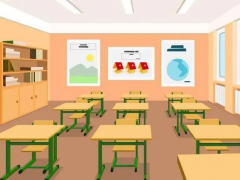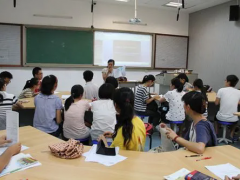英语知识点总结

初中英语知识点总结能归纳下初一到初三的语法和重要的地方.因为以前
. 一般现在时的用法 1) 经常性或习惯性的动作,常与表示频腮度的时间状语连用. 时间状语: every…, sometimes, at…, on Sunday I leave home for school at 7 every morning. 2) 客观真理,客观存在,科学事实. The earth moves around the sun. Shanghai lies in the east of China. 3) 表示格言或警句中. Pride goes before a fall. 骄者必败. 注意:此用法如果出现在宾语从句中,即使主句是过去时,从句谓语也要用一般现在时. 例:Columbus proved that the earth is round.. 4) 现在时刻的状态、能力、性格、个性. I dont want so much. Ann Wang writes good English but does not speak well. 比较:Now I put the sugar in the cup. I am doing my homework now. 第一句用一般现在时,用于操作演示或指导说明的示范性动作,表示言行的瞬间动作.再如:Now watch me, I switch on the current and stand back. 第二句中的now是进行时的标志,表示正在进行的动作的客观状况,所以后句用一般现在时. 2. 一般过去时的用法 1)在确定的过去时间里所发生的动作或存在的状态. 时间状语有:yesterday, last week, an hour ago, the other day, in 1982等. Where did you go just now? 2)表示在过去一段时间内,经常性或习惯性的动作. When I was a child, I often played football in the street. Whenever the Browns went during their visit, they were given a warm welcome. 3)句型: It is time for sb. to do sth "到……时间了" "该……了" It is time sb. did sth. "时间已迟了" "早该……了" It is time for you to go to bed. 你该睡觉了. It is time you went to bed. 你早该睡觉了. would (had) rather sb. did sth. 表示宁愿某人做某事 Id rather you came tomorrow. 4) wish, wonder, think, hope 等用过去时,作试探性的询问、请求、建议等. I thought you might have some. 我以为你想要一些. 比较: 一般过去时表示的动作或状态都已成为过去,现已不复存在. Christine was an invalid all her life. (含义:她已不在人间.) Christine has been an invalid all her life. (含义:她现在还活着) Mrs. Darby lived in Kentucky for seven years. (含义:达比太太已不再住在肯塔基州.) Mrs. Darby has lived in Kentucky for seven years. ( 含义:现在还住在肯塔基州,有可能指刚离去) 注意: 用过去时表示现在,表示委婉语气. 1)动词want, hope, wonder, think, intend 等. Did you want anything else? I wondered if you could help me. 2)情态动词 could, would. Could you lend me your bike? 3. used to / be used to used to + do:"过去常常"表示过去习惯性的动作或状态,但如今已不存在. Mother used not to be so forgetful. Scarf used to take a walk. (过去常常散步) be used to + doing: 对……已感到习惯,或"习惯于",to是介词,后需加名词或动名词. He is used to a vegetarian diet. Scarf is used to taking a walk.(现在习惯于散步) 典型例题 ---- Your phone number again? I ___ quite catch it. ---- Its 69568442. A. didnt B. couldnt C. dont D. cant 答案A. 本句虽没有明确的时间状语,但从语意上看 出,在听的时候没有听懂这个动作发生在过去,因此应用过去时. 4. 一般将来时 1) shall用于第一人称,常被will 所代替. will 在陈述句中用于各人称,在争求意见时常用于第二人称. Which paragraph shall I read first. Will you be at home at seven this evening? 2) be going to +不定式,表示将来. a. 主语的意图,即将做某事. What are you going to do tomorrow? b. 计划,安排要发生的事. The play is going to be produced next month. c. 有迹象要发生的事 Look at the dark clouds, there is going to be a storm. 3) be +不定式表将来,按计划或正式安排将发生的事. We are to discuss the report next Saturday. 4) be about to +不定式,意为马上做某事. He is about to leave for Beijing. 注意:be about to 不能与tomorrow, next week 等表示明确将来时的时间状语连用. 5. be going to / will 用于条件句时, be going to 表将来 will 表意愿 If you are going to make a journey, youd better get ready for it a s soon as possible. Now if you will take off your clothes, we will fit the new clothes on you in front of the mirror. 6. be to和be going to be to 表示客观安排或受人指示而做某事. be going to 表示主观的打算或计划. I am to play football tomorrow afternoon. (客观安排) Im going to play football tomorrow afternoon. (主观安排) 7. 一般现在时表将来 1)下列动词:come, go, arrive, leave, start, begin, return的一般现在时表将来.这主要用来表示在时间上已确定或安排好的事情. The train leaves at six tomorrow morning. When does the bus star? It stars in ten minutes. 2)倒装句,表示动作正在进行,如: Here comes the bus. = The bus is coming. There goes the bell. = The bell is ringing. 3)在时间或条件句中. When Bill comes (不是will come), ask him to wait for me. Ill write to you as soon as I arrive there. 4)在动词hope, take care that, make sure that等后. I hope they have a nice time next week. Make 。
高中英语知识点总结
我个人认为,英语作文首先要注重条理,文章要做到条理清楚,让阅读者明白你的写作思路.如果你想到一句写一句,东拼西凑是得不到高分的,一般英语作文都是分三段,第一段提出问题,第二段分析问题.第三段提出个人的观点.在分析问题的时候,一般分析的是原因,每个原因你用相应的词组连接使得文章更有条理,例如,first of all,后面你写下第一个原因.Besides ,后面你加上第二个原因,the last but not the least,你加上第三个原因,这样每个原因的就让人一目了然,思路清晰.在第三段提出个人观点的时候也可以说,In my point of view,as far as Im concerned,别总是说in my opinion,太千篇一律了.个人观点一般写两个就可以了,on one hand 后面你写一个观点.on th other hand,, 你写一个观点.最后在写文章适当的用上一些精彩的词语和,词语的表达要富于变化,例如老父亲我们可以说old father也可以说aged father。
再注意少写错别字,文章的得分就不会低.。
求初中英语所有知识点总结~
初中英语总复习(100多页的内容,涵盖从初一到初三所有知识点绝对经典,是每个九年级英语教师必备资料) 名词的数 1、可数名词与不可数名词 A、不可数名词,初中阶段常见的不可数名词有:water ; meat ; rice ; bread ; milk ; tea ; orange(桔汁) ; fruit ; air ; snow ; chalk; work ; paper(纸) ; time(时间); music ; weather ; grass ; news ; food ; fish(鱼肉); coke ; porridge ; cake(可数或不可数). 不可数名词应注意以下几点: 1)前无数、冠,后无复数;作主语为三单. 2)表量用约数some /any ; much ; a lot of 或用of短语 eg. There is ____ bread on the table. [C] A. a B. one C. a piece of D. many There is some_______ on the plate. [B] A. apple B. fish C. milks D. deer 这是些例题 你可以到这个网站去下载 http://www.ewteacher.com/r4-article-73225.html全部 如果全部给你复制起来字数就超过限制了(限制为2000 这点非常不好 不知道TX为什么搞什么限制)。
人教版初一到初二英语书上的主要语法和知识点
【精萃】新目标英语知识点总结及练习七年级上【知识梳理】 I. 重点短语1. Sit down2. on duty3. in English4. have a seat5. at home6. look like7. look at8. have a look9. come on10. at work11. at school12. put on13. look after14. get up15. go shoppingII. 重要句型1. help sb. do sth.2. What about…?3. Lets do sth.4. Its time to do sth.5. Its time for …6. Whats…? It is…/ Its…7. Where is…? Its….8. How old are you? Im….9. What class are you in? Im in….10. Welcome to….11. Whats …plus…? Its….12. I think…13. Whos this? This is….14. What can you see? I can see….15. There is (are) ….16. What colour is it (are they)? Its (Theyre)…17. Whose …is this? Its….18. What time is it? Its….III. 交际用语1. Good morning, Miss/Mr….2. Hello! Hi!3. Nice to meet you. Nice to meet you, too.4. How are you? Im fine, thank you/thanks. And you?5. See you. See you later.6. Thank you! Youre welcome.7. Goodbye! Bye!8. Whats your name? My name is ….9. Here you are. This way, please.10. Whos on duty today?11. Lets do.12. Let me see.IV. 重要语法1. 动词be的用法;2. 人称代词和物主代词的用法;3. 名词的单复数和所有格的用法;4. 冠词的基本用法;5. There be句型的用法.【名师讲解】1. in/on 在表示空间位置时,in表示在某个空间的范围以内,on表示在某一个物体的表面之上.例如: There is a bird in the tree. 树上有只鸟. There is a picture on the wall. 墙上有张图.2. this/that/these/those (1)this常常用来指在时间、地点上更接近讲话人的人和事,these是this的复数形式.that常常用来指在时间、地点上离讲话人更远一点的人和事,those时that的复数形式.例如: You look in this box and Ill look in that one over there.你看看这个盒子,我去看那边的那个盒子. I want this car, not that car. 我想要这辆小汽车,不是那一辆. Take these books to his room, please. 请把这些书拿到他房间去. This is mine; thats yours. 这个是我的,那个是你的. These are apples; those are oranges. 这些是苹果,那些是橘子. (2)在打电话的用语中,this常常指的是我,that常常指的是对方.例如: This is Mary speaking. Whos that? 我是玛丽.你是谁?3. There be/ haveThere be "有",其确切含意为"某处或某时存在某人或某物."其结构是:There be + 某人或某物 + 表示地点或时间的状语.There be 后面的名词实际上是主语,be 动词的形式要和主语在数上保持一致,be动词后面的名词是单数或不可数名词时用is,名词是复数时用are.例如:(1) There is a big bottle of coke on the table. 桌上有一大瓶子可乐.(2) There is a doll in the box. 那个盒子里有个娃娃.(3) There are many apples on the tree. 那树上有许多苹果.总之,There be结构强调的是一种客观存在的"有".have表示"拥有,占有,具有",即:某人有某物(sb. have / has sth.).主语一般是名词或代词,与主语是所属关系.例如:(4) I have two brothers and one sister.我有两个兄弟,一个姐姐.(5) That house has four rooms.那所房子有四个房间.4. look/ see/ watch (1)look 表示“看、瞧”,着重指认真看,强调看的动作,表示有意识地注意看,但不一定看到,以提醒对方注意.,如:Look! The children are playing computer games. 瞧!孩子们在玩电脑游戏.Look! Whats that over there? 看!那边那个是什么?单独使用是不及物动词,如强调看某人/物,其后接介词at,才能带宾语,如:Hes looking at me.他正在看着我.(2)see强调“看”的结果,着重的是look这个动作的结果,意思是“看到”,see是及物动词,后面能直接跟宾语.如:What can you see in the picture? 你能在图上看到什么?Look at the blackboard. What did you see on it?看黑板!你看到了什么?(3)watch“观看,注视”,侧重于场面,表示全神贯注地观看、观察或注视某事务的活动,强调过程,常用于“看电视、看足球、看演出”等.如:Yesterday we watched a football match on TV.昨天我们从电视上看了一场足球比赛.4. put on/ / in put on意为“穿上,戴上”.主要指“穿上”这一动作, 后面接表示服装、鞋帽的名词.in 是介词,表示“穿着”强调状态.在句中可以做定语、标语和状语.如:Its cold outside, put on your coat. 外面冷,穿上你的外衣.He puts on his hat and goes out. 他戴上帽子,走了出去.The woman in a white blouse is Johns mother.穿白色衬衣的那个妇女是John的妈妈.5. house/ home/familyhouse :“房子”,指居住的建筑物; Home: “家”,指一个人同家人共同经常居住的地方; Family: “家庭“,“家庭成员”.例如:Please come to my house this afternoon. 今天下午请到我家来.He is not at home. 他不在家.My family all get up early. 我们全家都起得很早.6. fine, nice, good, well四者都可用作形容词表示"好"之意,但前三者既可作表语又可作定语,而后者仅用作表语.主要区别在于: (1) fine指物时表示的是质量上的"精细",形容人时表示的是"身体健康",。
英语重点知识
初一英语语法虽然是从简单的一些日常用语出发的,但语法中常会有一些知识点看起来很细小,容易被忽视,但这些知识点掌握不熟练,往往会造成一些语法应用上的错误。
因此在学习初一英语语法时,要认真、细心,不要觉得一些地方不重要而得过且过。下面从几个方面,总结出了初一英语语法,如果要复习英语句法的同学,可以参考一下,一、初一英语语法——词法1、名词A)、名词的数我们知道名词可以分为可数名词和不可数名词,而不可数名词它没有复数形式,但可数名词却有单数和复数之分,复数的构成如下:一)在后面加s。
如:fathers, books, Americans, Germans, apples, bananas二)x, sh, ch, s, tch后加es。如:boxes, glasses, dresses, watches, wishes, faxes三)1)以辅音字母加y结尾的变y为i再加es 如:baby-babies, family-families, duty-duties, comedy-comedies, documentary-documentaries, story-stories2)以元音字母加y结尾的直接加s。
如:day-days, boy-boys, toy-toys, key-keys, ways四)以o结尾加s(外来词)。如:radios, photos, 但如是辅音加o的加es:如: tomatoes西红柿, potatoes马铃薯五)以f或fe结尾的变f为v再加es(s)。
如:knife-knives, wife-wives, half-halves, shelf-shelves, leaf-leaves, yourself-yourselves六)单复数相同(不变的)有:fish, sheep, deer鹿子, Chinese, Japanese七)一般只有复数,没有单数的有:people,pants, shorts, shoes, glasses, gloves, clothes, socks八)单词形式不变,既可以是单数也可以是复数的有:police警察局,警察, class班,同学, family家,家庭成员九)合成的复数一般只加主要名词,多数为后一个单词。如:action movie-action movies, pen pal-pen pals; 但如果是由man或woman所组成的合成词的复数则同时为复数。
如:man doctor-men doctors, woman teacher-women teachers十)有的单复数意思不同。如:fish鱼 fishes鱼的种类, paper纸 papers报纸,卷子,论文, work工作 works作品,工厂, glass玻璃 glasses玻璃杯,眼镜, orange桔子水 oranges橙子, light光线 lights灯, people人 peoples民族, time时间 times时代, 次数, chicken 鸡肉 chickens 小鸡十一) 单个字母的复数可以有两种形式直接加s或s。
如:Is (Is), Ks (Ks)。但如是缩略词则只加s。
如:IDs, VCDs, SARs十二) 特殊形式的有:child-children, man-men, woman-women, foot-feet, mouse-mice, policeman-policemen, Englishman-EnglishmenB)名词的格当我们要表示某人的什么东西或人时,我们就要使用所有格形式。构成如下:一)单数在后面加s。
如:brothers, Mikes, teachers二)复数以s结尾的直接在s后加,如果不是以s结尾的与单数一样处理。如:Teachers Day教师节, classmates; Childrens Day六一节, Womens Day三八节三)由and并列的名词所有时,如果是共同所有同一人或物时,只加最后一个s,但分别拥有时却分别按单数形式处理。
如:Mike and Bens room迈克和本的房间(共住一间),Mikes and Bens rooms迈克和本的房间(各自的房间)2、代词项目 人称代词 物主代词 指示代词 反身代词人称 主格 宾格 形容词 名词性第一人称 单数 I me my mine myself复数 we us our ours ourselves第二人称 单数 you you your yours yourself复数 you you your yours yourselves第三人称 单数 she her her hers herselfhe him his his himselfit it its its this that itself复数 they them their theirs these those themselves3、动词A) 第三人称单数当动词是第三人称单数时,动词应该像名词的单数变动词那样加s,如下:一)一般在词后加s。如:comes, spells, waits, talks, sees, dances, trains二)在x, sh, ch, s, tch后加es。
如:watches, washes, wishes, finishes三)1)以辅音字母加y结尾的变y为i再加es。如:study-studies, hurry-hurries, try-tries2)以元音字母加y结尾的直接加s。
如:plays, says, stays, enjoys, buys四)以o结尾加es。如:does, goes五)特殊的有:are-is, have-hasB) 现在分词当我们说某人正在做什么事时,动词要使用分词形式,不能用原形,构成如下:一)一般在后加ing。
如:spell-spelling, sing-singing, see-seeing, train-training, play-playing, hurry-hurrying, watch-watching, go-going, do-doing二)以不发音e的结尾的去掉e再加ing。如:dance-dancing, wake-waking, take-taking, practice-practicing, write-writing, have-having三)以重读闭音节结尾且一个元音字母+一个辅音字母(注意除开字母组合如show –showing, draw-drawing)要双写最后的辅音字母再加ing。
如:put-putting, run-running, get-getting, let-letting, begin-beginning四)以ie结尾的变ie为y再加ing。如:tie-tying系 die-dying死 lie-lying 位于4、形容词的级我们在对两个或以上的人或物进行对比时,则要使用比较或最高级形式。
构成如下:一) 一般在词后加er或est(如果是以e结尾则直接加r或st)。如:greater-greatest, shorter –shortest, taller –tallest, longer –longest, nicer- nicest, larger -largest二)以重读闭音节结尾且1个元音字母+1个辅音字母。
帮忙总结这个几个英语知识点..谢一、动词用法:(1)时态(2)非谓
一【1】1、一般现在时(do); 2、一般过去时(did); 3、一般将来时( will do)(be going to do); 4、一般过去将来时( would do); 5、现在进行时( be doing); 6、过去进行时(was/were doing); 7、将来进行时( will be doing); 8、过去将来进行时( would be doing)(was/were going to do); 9、现在完成时(have done); 10、过去完成时( had done); 11、将来完成时( will have done); 12、过去将来完成时(would have done); 13、现在完成进行时( have been doing); 14、过去完成进行时( had been doing); 15、将来完成进行时( will have been doing); 16、过去将来完成进行时(would have been doing).【2】在句子中充当除谓语以外的各种句子成分的动词形式叫做非谓语动词(the Non-Finite Verbs).非谓语动词有三种:不定式(the Infinites)、动名词(the Gerunds)和分词(the Participles). 主动形式 被动形式 一般式 (not) to make (not) to be made 完成式 (not) to have made (not) to have been made 进行式 (not) to be making 完成进行式 (not) to have been making 二形容词与副词的比较级 1)规则变化 单音节词和少数双音节词,加词尾-er,-est来构成比较级和最高级. 构成法 原级 比较级 最高级 一般单音节词 tall(高的) taller tallest 未尾加-er,-est great(巨大的) greater greatest 以不发音的e结尾 nice(好的) nicer nicest 的单音词和少数 large(大的) larger largest 以- le结尾的双 able(有能力的) abler ablest 音节词只加-r,-st 以一个辅音字母 big(大的) bigger biggest 结尾的闭音节单 hot热的) hotter hottest 音节词,双写结 尾的辅音字母, 再加-er,-est "以辅音字母+y" easy(容易的) easier easiest 结尾的双音节词,busy(忙的) busier busiest 改y为i,再加 -er,-est 少数以-er,-ow clever(聪明的) cleverer cleverest 结尾的双音节词 narrow(窄的) narrower narrowest 未尾加-er,-est 其他双音节词和 important(重要的) 多音节词,在前 more important 面加more,most most important 来构成比较级和 easily(容易地) 最高级. more easily most easily 2) 不规则变化 原级 比较级 最高级 good(好的)/ better best well(健康的) bad (坏的)/ worse worst ill(有病的) old (老的) older/elder oldest/eldest much/many(多的) more most little(少的) less least far (远的) farther/further farthest/furthest三句子的成分结构.句子的成分:句子成分是句中起一定功用的一个组成部分.句子成分可以分为八种. 1)主语subject:主语是句子的主体,是句子所要说明的人或事物,表示句子描述的是“谁”或“什么”.主语通常由名词、代词、数词、动词不定式、动名词、或主语从句担任.2)谓语predicate:谓语是说明主语的动作或状态的部分.谓语一般由动词或动词短语担任,位置在主语之后.3)表语predicative:表语是在连系动词之后表示主语性质、特征、状态或身份的部分.表语通常由名词、代词、形容词、副词、介词短语以及动词不定式、动名词、分词或表语从句担任,位置在连系动词之后.4)宾语object:宾语表示及物动词的对象或内容.介词后面的名词或代词叫做介词宾语.宾语通常由名词、代词、数词或与之相当的结构但任,位置在及物动词或介词之后.5)补语complement:补语用于补充说明主语或宾语.补语通常由形容词、名词或其他相当的结构担任.补语分为宾语补足语和主语补足语.6)定语attributive:定语用于限定或修饰名词或代词,通常由形容词或与之相当的结构担任.单词作定语一般放在被修饰语的前面,短语或从句作定语放在被修饰语的后面.7)状语adverbial:状语用于修饰动词、形容词、副词或整个句子.状语通常由副词或与之相当的结构担任.8)同位语appositive:同位语位于名词或名词性短语之后,说明其内容.同位语通常由名词、名词性短语或从句担任.2.英文句子构成:主语部分+谓语部分主语部分以代词、名词或名词短语来充当,来表明我们要陈述的对象.而在主语之后的动词及其后面的部分,都是用来说明主语做什么,或者描述主语的状况.这就是陈述的内容,即谓语部分.3.五种基本句型1)主语+谓语动词(+状语)此句型特点:既然该句型中动词后面没有宾语,所以用于这个句型的动词应该是不及物动词.2)主语+系动词+表语所谓系动词,又叫连系动词.即这种动词并没有具体的动作,只是起连接主语和后边的成分的作用.a) 表示主语的特征、状态的:look, sound, taste, smell, seem, appear, feel等b) 表示主语由一种状态转变为另一种状态的:become, grow, get, turn, go, fall, come等.(这些系动词和形容词连用,一般是句由固定的搭配关系)c)表示主语保持某种状态的:continue, remain, stay, keep, hold, rest, prove等3)主语+谓语+宾语4)主语+谓语+双宾语a)同give一样,当间接宾语后移时,间接宾语前需要带介词to,表示间接宾语是动作的接收者.这样的动词:bring, offer, pass, show, take, write等.b)同buy一样,当间接宾语后移时,间接宾语前需要带介词for,这样的动词有:book(预订), choose, find, get, keep, order, prepare等。
.。
求英语知识总结,比如说can+动词原形,dicedetodosth.等等等等一系
1.can do2.want to do3.like to do / like doing4.would like to do5.love doing6.finish doing7.be+adj doing如be interested doing8.spend doing / spend on sth10.It be +adj+doing 如It is boring to play game.11.It take sb sometime to do sth.12.mind doing能想起的就这些了。






